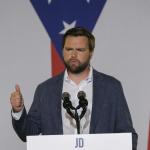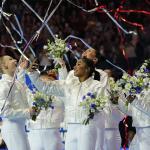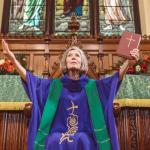Since “worship service” sounded stuffy, ads for the new Saturday night gathering called it a “celebration.”
Greeters handed out “celebration folders” instead of bulletins. Clergy wore jeans and polo shirts instead of vestments and the faithful sang along to slides projected on a wall, instead of using hymnals. The call to worship became a “warm up” and the service ended with a “see you next week” benediction, followed by pizza. The “action words” — that’s the sermon — led into question and-answer sessions. Often, the clergy yielded the floor to “guest headliners” who sang, spoke on social issues or discussed their latest books.
In other words, this Southern California church created a “seeker” service to try to reach “unchurched” people who are more interested in spiritual issues than in conventional churches. This is happening nationwide, especially in the Protestant congregations that researchers call “megachurches.”
What makes this case study interesting is that the Metropolitan Community Church (MCC) of San Diego isn’t exactly what most people would call a “conventional church.” It’s part of a growing denomination composed almost entirely of gays and lesbians and their families.
These days, even niche churches need to be user-friendly.
“A whole lot of the evangelical church-growth literature has been quite helpful to us,” said the Rev. Don Eastman, who leads his denomination’s Strategic Growth Initiative. The former Assembly of God pastor serves on the MCC’s seven-member board of elders and works in it’s global headquarters in West Hollywood, Calif. “What we’re learning is that it’s crucial for a church to have a clear sense of how it views the world and to be able to communicate that vision to others. That’s the challenge all churches face, today. It just isn’t easy to reach new people.”
In fact, the San Diego church’s Saturday night “celebrations” weren’t a big success. So now it plans to experiment with Sunday night gospel music services. The congregation has set a goal of being a megachurch — with 1,000 to 2,000 members or more — within a decade.
Others have caught this vision. The 30-year-old Universal Fellowship of Metropolitan Community Churches sent a 50-member delegation to one of the spotlighted events on the church-growth scene — the Robert H. Schuller Institute for Successful Church Leadership at the Crystal Cathedral in Garden Grove, Calif. Last month’s gathering drew more than 2,000, including a Moslem cleric, said Eastman. The program included leaders from giant mainline Protestant churches, as well superstars such as Schuller and the Rev. Bill Hybels of Willow Creek Community Church outside of Chicago.
“I have always felt right at home at these meetings,” said Eastman. “It’s not that the people at the Schuller Institute have endorsed us. It’s probably more of a ‘don’t ask, don’t tell’ policy. But the whole point is to focus on what unites us, instead of what divides us. These meetings aren’t about doctrine. They’re about churches improving their music, their worship and how they communicate their message.”
Eastman first attended the Schuller Institute in 1981, when he was the pastor of the MCC’s new Dallas congregation. Today, the Cathedral of Hope has about 2,000 members and a mailing list of 30,000 names taken from its visitor’s book. It’s the flagship church in a 285-church network that is “determined to be taken seriously as a church, not just as another activist group in the gay and lesbian community,” he said.
Reaching that goal may require gathering tips from leaders in a wide range of churches, including some that reject the MCC’s stands on gender and sexual orientation. That’s the reality of life in the American marketplace, said Eastman. Many people are using the same techniques, even if they are delivering different messages.
“Obviously, many churches interpret scripture in many different ways. Everybody knows that,” he said. “What we have to do is present our view of the Bible with a sense of integrity. We have to offer a clear, coherent biblical viewpoint that makes sense to people. We’re convinced we can find new ways to do that. We’re getting better at it all the time.”











